Florence Nightingale (1820-1910) is famously the lady with the lamp, the nurse everyone can name. From the moment in 1854 that she set sail to lead the British army’s nursing operation in the Crimean War, she has been a semi-mythical figure: immortalised in print, image, statues, buildings and memorabilia.
Born in Florence, Italy, to a Derbyshire family, Nightingale grew up in a world of comfort and privilege. On their return to England after Florence’s birth, the family split their time between their two homes, Lea Hurst in Derbyshire and Embley in Hampshire. It was this world that Florence left behind in October 1854 when she set sail, with a group of 38 nurses under her charge, to work in the British military hospital at Scutari. Her actions in the war propelled her to fame. Less well-known today is the work that she undertook after the war to improve sanitary conditions in homes and in institutions such as hospitals. Florence Nightingale Comes Home has been postponed for now, but here are some photographs that tell us a bit more about the real woman behind ‘the lady with the lamp’.
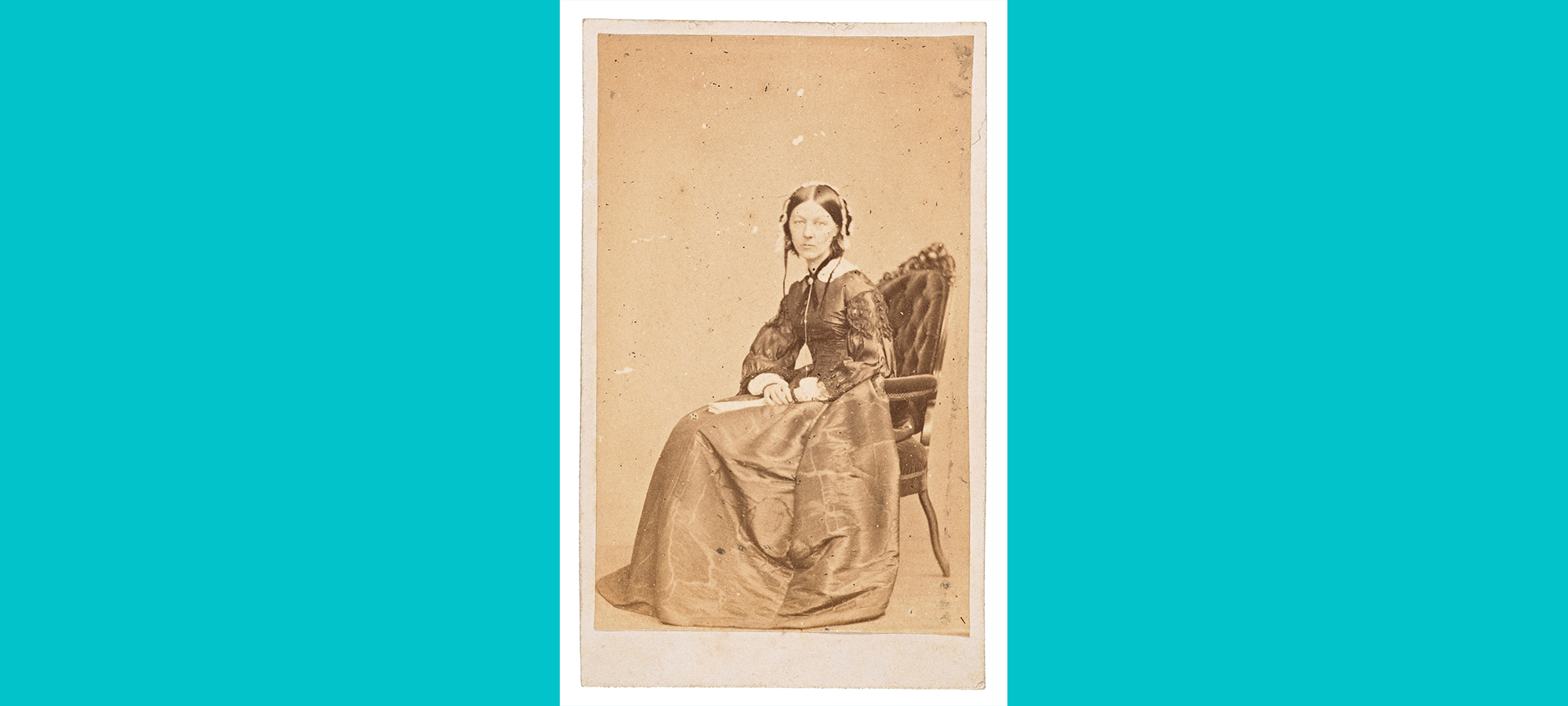
Carte de visité of Florence Nightingale, by William Edward Kilburn, c.1856.
From a private collection.
Photographic visiting cards became enormously popular in the 1850s, pioneered by French photographer André-Adolphe-Eugène Disdéri. Nightingale, as one of the decade’s leading celebrities, featured on some 250,000 of them – chiefly reproductions of this image by William Edward Kilburn.
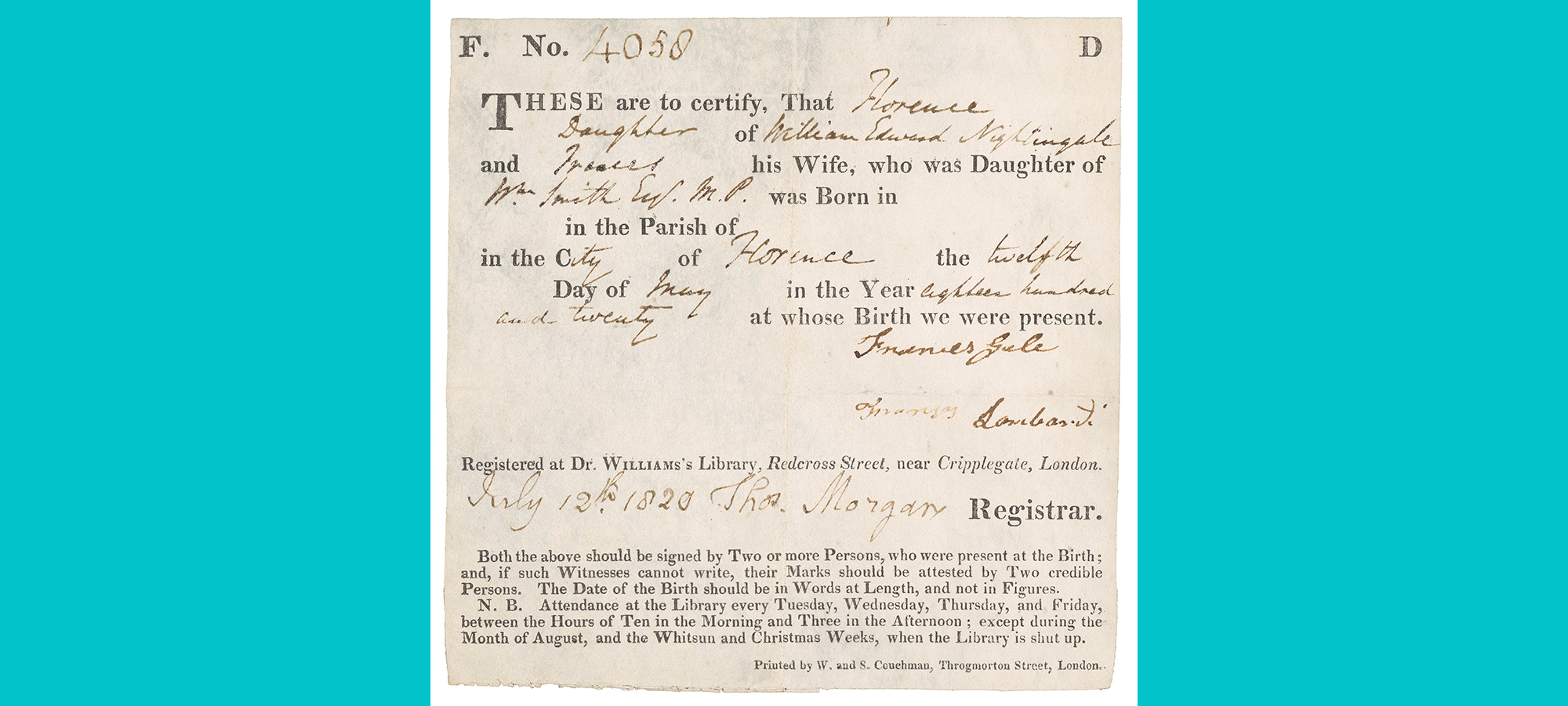
Certificate of registration of Florence Nightingale’s birth, 12 July 1820.
Nightingale Papers, N 461/14 a-b. Claydon House Trust, an independent charitable trust which cares for the archives of the Nightingale and Verney families held at Claydon House, Buckinghamshire.
Nightingale was born in Florence on 12th May 1820 and named after the city of her birth. At that time there was no national scheme in England for the registration of births, but baptisms were recorded in the parish registers of the Church of England. As non-conformists, Florence’s parents did not have her baptised in an Anglican Church but instead chose to use Dr Williams’ Library in London, which kept a central registry of births that was mainly used by non-conformist families. Florence’s birth was registered here on the 12th July 1820.
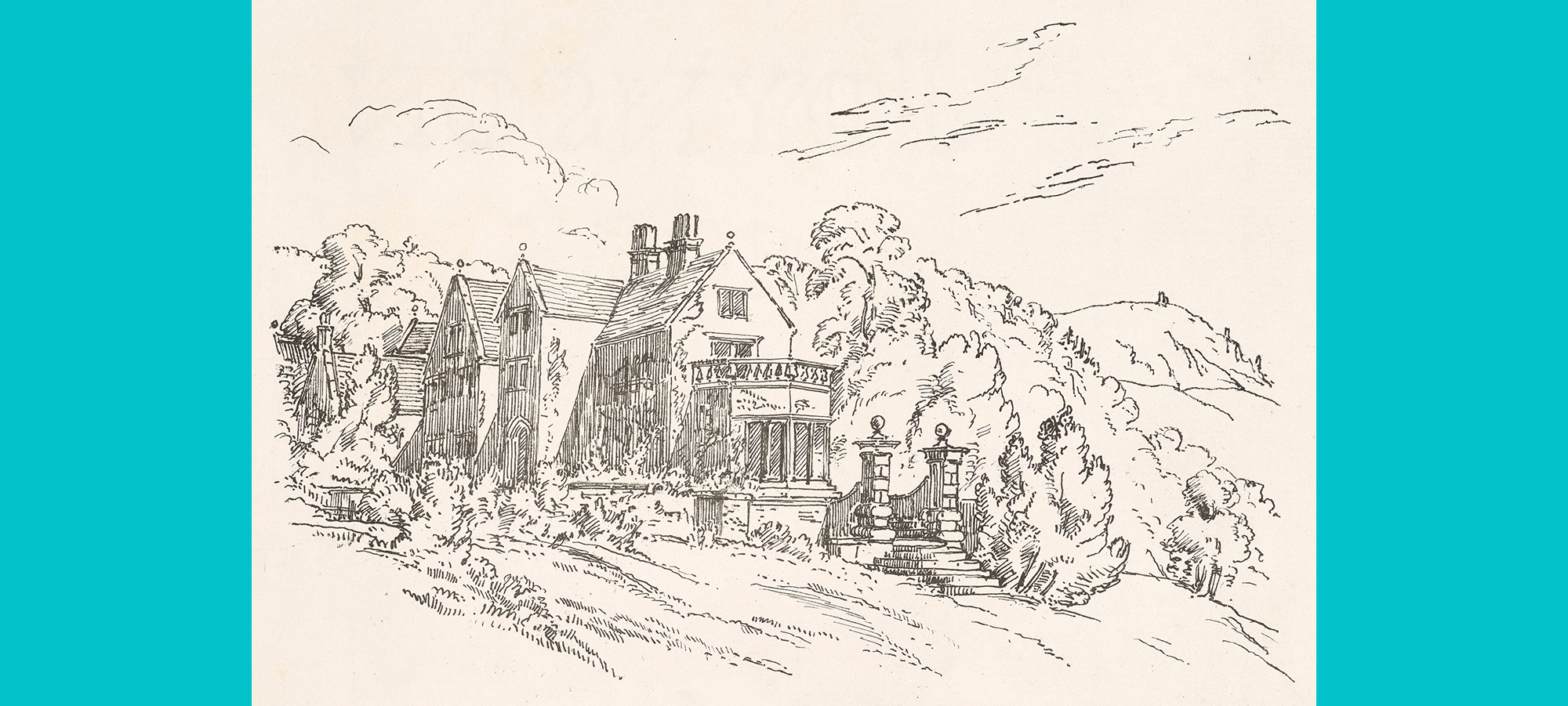 Print of sketch of Lea Hurst, the Nightingale family home in Derbyshire, n.d.
Print of sketch of Lea Hurst, the Nightingale family home in Derbyshire, n.d.
Verney/Claydon Estate Papers, From Verney 13/2. Claydon House Trust, an independent charitable trust which cares for the archives of the Nightingale and Verney families held at Claydon House, Buckinghamshire.
Nightingale’s father, William, built Lea Hurst with money inherited from his great-uncle Peter Nightingale, who had made his fortune in the Derbyshire lead industry.
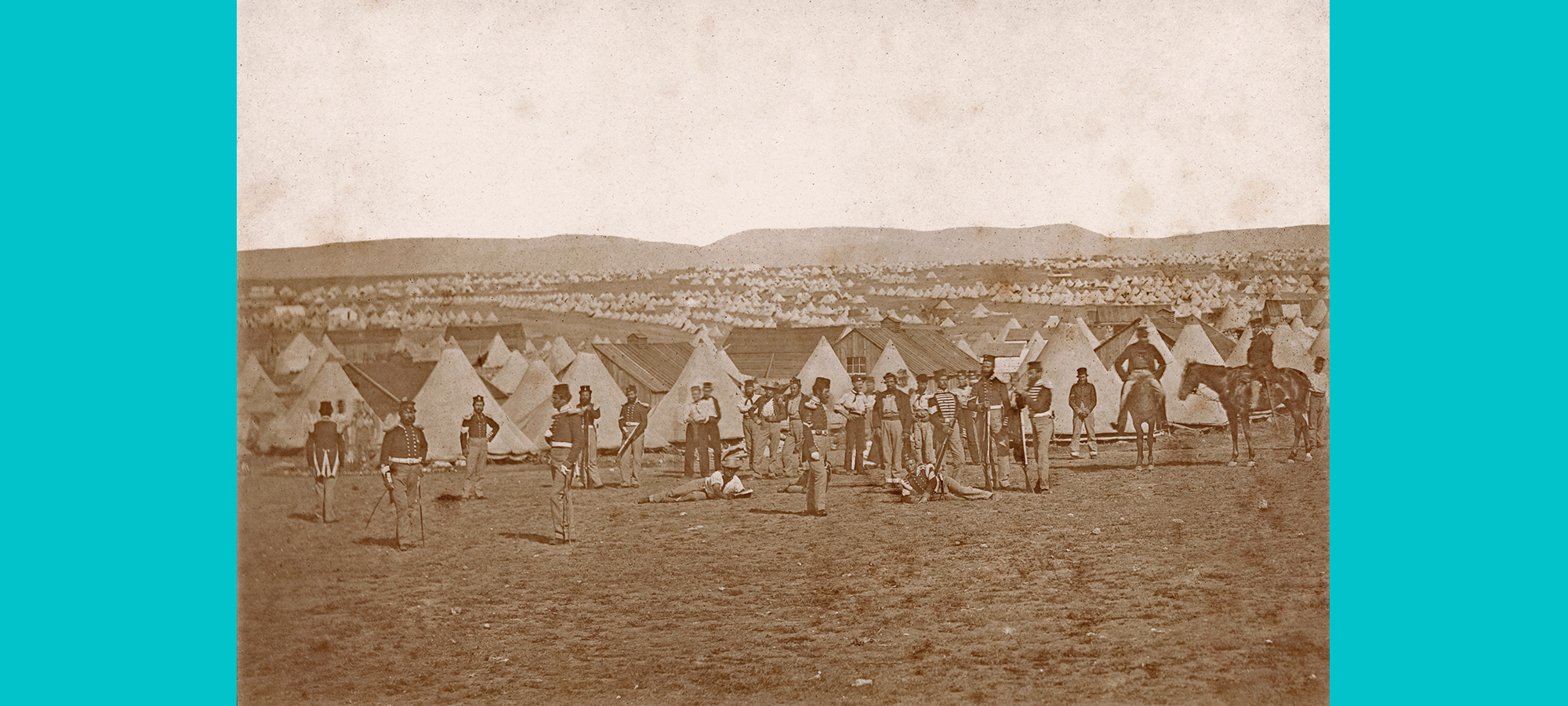
Photograph of the Camp of the 97th Regiment in front of Sevastopol [Ukraine], by James Robertson or Felice Beato; n.d. [c. Sep. 1855].
Ne C 10884/2/13, University of Nottingham Manuscripts and Special Collections.
The Crimean War was one of the first to be photographed. The origins of the war are complex; it began in 1853 as a conflict between Russia and the Ottoman Empire for control of the shores of the Black Sea. Britain and France intervened on the Turkish (Ottoman) side following Russia’s advance into modern-day Romania and destruction of the Ottoman navy at Sinope. The allies first landed at Varna, in Bulgaria, before deciding to invade the Crimea in September 1854 in order to capture the Russian naval base of Sevastopol.

Poem, ‘To Florence Nightingale’ by Martin Farquhar Tupper, 1855.
Ms 247/2/2, University of Nottingham Manuscripts and Special Collections.
Nightingale’s work in the Crimea prompted an outpouring of poetry about her, a small selection of which features in the exhibition. This example was copied by a Crimean war soldier and found amongst his papers.
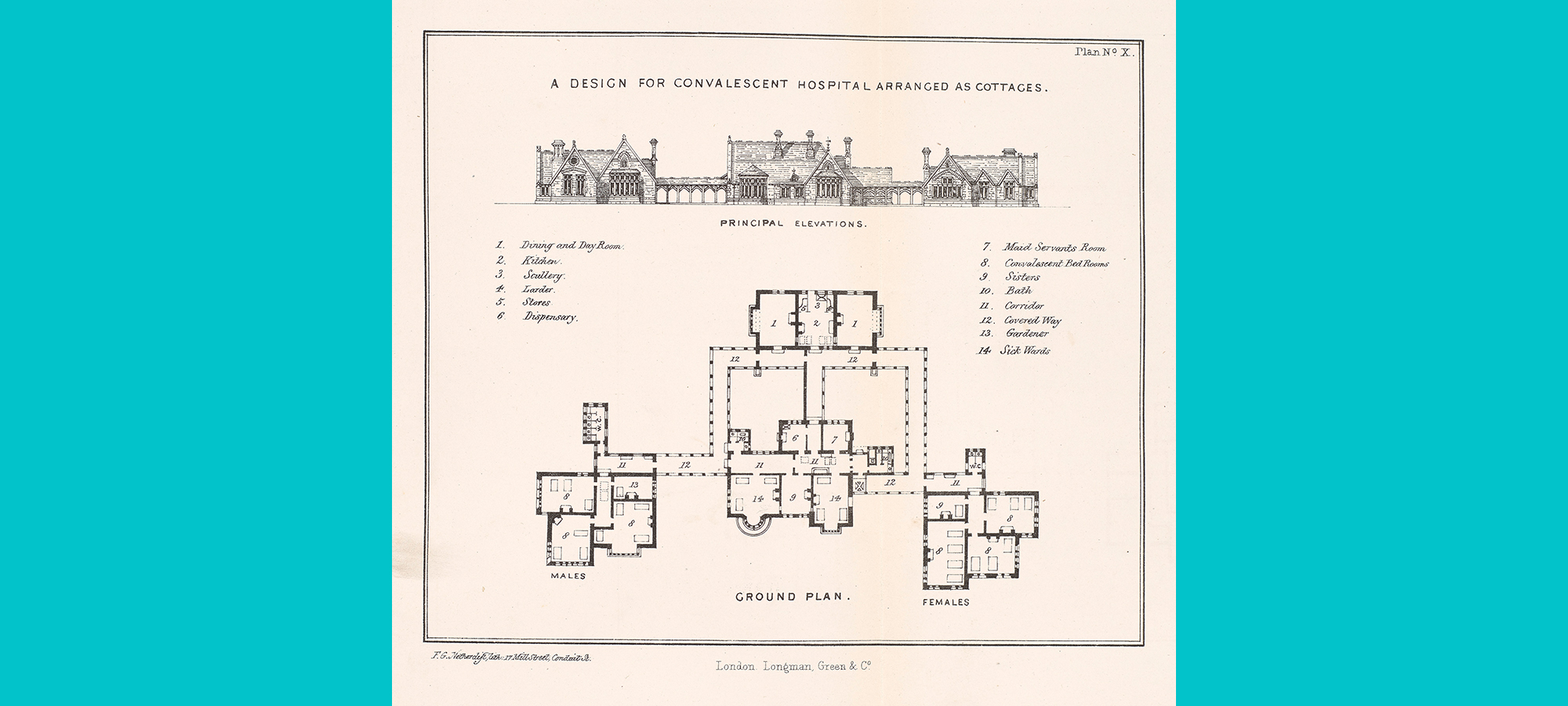
A Design for a Convalescent Hospital. From Florence Nightingale, Notes on Hospitals (1859).
Medical Rare Books, WX11.FE5 NIG, University of Nottingham Manuscripts and Special Collections.
Nightingale’s influence is still felt in the many hospitals in Britain and around the world in which she is remembered, and to whose design she often contributed. As well as working on the design of large hospitals Nightingale also championed smaller institutions. She felt that people undergoing extended recovery from surgery or illness did not belong in a hospital environment. In Notes on Hospitals (1859) she identified a need for a new kind of institution – convalescent homes.
Learn more about the Florence Nightingale Comes Home exhibition by visiting the University of Nottingham's Manuscripts and Special Collections website here.
